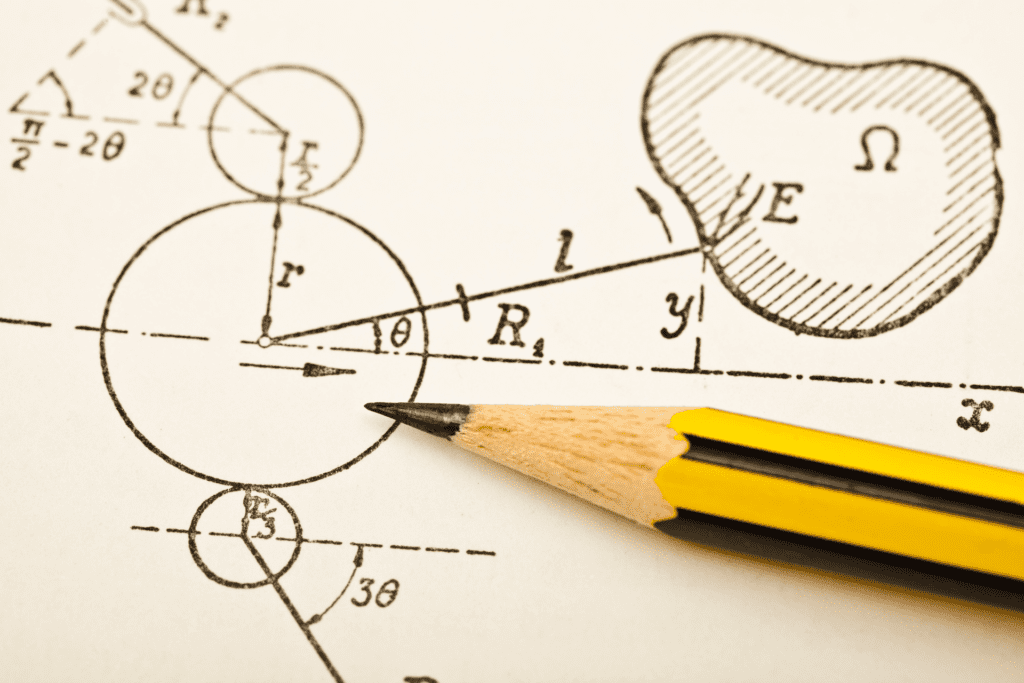Demystifying Physics: Tips from a Physics Tutor in Sydney

Have you ever wondered why the sky is blue or what makes your phone work? Physics helps us answer these cool questions! But, we know it can be a bit tricky sometimes. All those formulas and big ideas can feel like a lot to understand, especially for students in Sydney who want to do well in school.
This is where a great Physics Tutor in Sydney can be super helpful. A tutor can turn those tough physics problems into something you can get your head around. They’re like a guide on a tricky journey, showing you the way and making it easier.
We’re going to share some awesome tips that make learning physics easier and more fun. And guess what? You’re not alone in this journey. Lots of students find physics a bit hard, and that’s okay. That’s why online tutoring can be so great. It’s like having a helpful friend who knows a lot about physics. Want to know more about how online tutoring can help? Check out our post on “Does Online Tutoring Really Work? Weighing the Benefits”.
So, grab your thinking cap, and let’s dive into the world of physics together. With the right tips and a bit of help from a tutor, you’ll be smashing those physics problems in no time!
Mastering Mechanics in Physics
Understanding Motion and Forces
Have you ever watched a cricket ball soar through the air or a car speed up at a green light? That’s physics in action, specifically the part we call mechanics. Mechanics is all about motion and the forces that cause it.
- Velocity and Acceleration: Velocity is how fast something is moving and in what direction. Acceleration is all about how quickly that speed changes. For example, when a skateboarder speeds up down a hill, that’s acceleration!
- Newton’s Laws of Motion: Sir Isaac Newton came up with three cool rules about motion. The first one says that things like to keep doing what they’re doing unless a force acts on them. The second talks about how force and acceleration are connected. And the third one? It says every action has an equal and opposite reaction.
Tips for Understanding Motion:
- Draw It Out: Sketching diagrams can really help. Draw arrows to show forces and motion directions.
- Real-Life Examples: Think about everyday things, like throwing a ball or riding a bike, and how they show these concepts.
- Practice Problems: Try solving different types of problems to get the hang of these ideas.
Energy and Work
Energy is what makes things happen, like running a race or lighting up a bulb. There are two main types we talk about in physics: kinetic energy (energy of movement) and potential energy (stored energy).
- Kinetic Energy: This is energy due to motion. The faster something moves, the more kinetic energy it has. Like a rollercoaster zooming down the track!
- Potential Energy: This is all about the energy stored up for later. Think of a stretched rubber band or a ball at the top of a hill – they’re just waiting to move!
Making Sense of Energy Transformations:
- Practical Examples: Look around you. A phone falling off a table (potential to kinetic energy) or a compressed spring (stored potential energy) are everyday examples of these concepts.
- Simple Experiments: Try some hands-on activities, like using a toy car and a ramp, to see energy transformation in action.
Mechanics might seem complicated at first, but once you start seeing these ideas in the world around you, it becomes a lot clearer. Remember, a Physics Tutor in Sydney can help make these tricky concepts easier to understand, turning your physics challenges into victories.
Navigating Electromagnetism
Electricity and Magnetism Fundamentals
The world of electromagnetism is fascinating and powers much of our modern life. To understand it, let’s start with the basics of electricity and magnetism.
- Understanding Electric Fields and Currents: An electric field is created around anything that has an electric charge, much like a force field. Imagine a magnet attracting iron filings – that’s similar to how an electric field influences other charged particles. Electric currents, on the other hand, happen when these charged particles start moving, such as when electrons move through a wire.
- Basics of Circuits: Circuits are the pathways that allow electricity to travel. They’re made of conductors like wires, a power source like a battery, and often other components like bulbs or motors. When you flip a switch, you’re either completing or breaking the circuit, allowing electricity to flow or stop.
Extra Tips for Grasping Electromagnetism:
- Break It Down: Start by understanding simple circuits before moving on to more complex ones.
- Use Analogies: Comparing electric circuits to water flowing through pipes can make the concept more relatable.
- Hands-On Learning: Building simple circuits using a battery, some wires, and a light bulb can solidify your understanding.
Applications in Daily Life
Electromagnetism is not just theory; it’s an integral part of our daily experiences.
- Real-World Examples: Your headphones use electromagnetism to convert electrical signals into sound. Refrigerator magnets use permanent magnets to stick to the metal door.
- Exploring with Experiments: Create a simple electromagnet at home. All you need is a nail, some copper wire, and a battery. Wrap the wire around the nail and connect the ends to the battery. Watch how the nail can now pick up small metal objects.
- Observing Magnetic Fields: To visualize a magnetic field, place a magnet under a sheet of paper and sprinkle some iron filings on top. The pattern the filings form shows you the invisible magnetic field lines.
By exploring these concepts and seeing how they apply in the world around you, electromagnetism becomes less of an abstract concept and more of a tangible part of everyday life. And if you’re still finding these ideas a bit tough, a Physics Tutor in Sydney can help guide you through with personalized explanations and more hands-on examples. With a bit of curiosity and guidance, the mysteries of electromagnetism can become clear and even exciting.
Looking for An Expert Maths Tutor in Sydney?
Exploring Waves and Optics
Wave Properties and Behavior
Waves are all around us, in the sounds we hear, the light we see, and even the Wi-Fi signals we use. Understanding waves starts with getting to know their basic characteristics.
- Frequency, Wavelength, and Amplitude: Think of waves as wiggly lines moving through space. The frequency is how many wiggles pass a point in a certain amount of time (like the number of waves hitting the shore per minute). Wavelength is the distance between two peaks of a wave, and amplitude is how tall those peaks are. Higher amplitude means more energy – like louder sounds or brighter lights.
- Interactions of Waves: Waves can do different things when they meet stuff. They can bounce off objects (reflection), bend around them (diffraction), or pass through and bend (refraction). These interactions explain lots of everyday phenomena, like why you hear echoes or see rainbows.
Visualizing Wave Behavior:
- Draw It Out: Sketching waves can help you visualize these concepts. Try drawing wave patterns to understand interference or how light bends through lenses.
- Simple Experiments: To see wave interference in action, drop two pebbles into a pond and watch how the ripples interact. For diffraction, look at a light source through a narrow slit or feather.
Light and Optics
Light, a form of electromagnetic wave, is crucial for how we see the world. Optics is the study of light and how it behaves and interacts with different materials.
- Basics of Light Behavior: Light travels in straight lines until it hits something. Then, depending on the material, it can be reflected, absorbed, or refracted. This is why we can see ourselves in mirrors (reflection) or why a straw looks bent in a glass of water (refraction).
- Understanding Lenses: Lenses are cool because they can bend light in useful ways. Convex lenses (thicker in the middle) can focus light to a point, like in a magnifying glass. Concave lenses (thicker at the edges) spread light out and are used in things like car headlights.
Tips for Mastering Optics:
- Use Everyday Examples: Notice how your sunglasses reduce glare (polarization) or how a camera focuses (lens adjustment).
- Hands-On Activities: Play with a magnifying glass to understand focal points, or use a prism to split light into a rainbow and explore light dispersion.
By exploring waves and optics, you’re unlocking a big part of how we interact with the world. These concepts might seem complex, but with practice and a bit of help from a Physics Tutor in Sydney, you can master them. Remember, physics is not just about learning theories; it’s about understanding the fascinating ways the world works.
Demystifying Modern Physics
Relativity and Quantum Physics
Diving into the realms of modern physics opens up a world where the usual rules we’re used to don’t always apply. It’s here that we encounter two of the most groundbreaking concepts in science: relativity and quantum mechanics.
- Einstein’s Theory of Relativity: This revolutionary theory, introduced by Albert Einstein, reshaped our understanding of space and time. It consists of two parts: Special Relativity and General Relativity. Special Relativity revealed that the laws of physics are the same for all non-accelerating observers and that the speed of light is constant regardless of the observer’s motion. General Relativity, on the other hand, introduced the concept that massive objects cause a distortion in space-time, which we perceive as gravity. Imagine space-time as a trampoline, and a heavy object placed on it causes a dip – this is how General Relativity visualizes gravity.
- Quantum Mechanics: This branch of physics deals with the bizarre and counterintuitive behavior of particles at the subatomic level. Here, particles can exist in multiple states simultaneously (quantum superposition) and can be entangled over vast distances (quantum entanglement). Quantum mechanics is crucial for understanding why atoms behave as they do and forms the basis for technologies like semiconductors and lasers.
More on Quantum Mechanics:
- Uncertainty Principle: Introduced by Werner Heisenberg, this principle states that it is impossible to know both the position and velocity of a particle with absolute certainty. The more precisely one is known, the less precise the measurement of the other is.
- Wave-Particle Duality: Particles like electrons and photons exhibit both wave-like and particle-like properties. This duality is central to quantum mechanics and challenges our classical understanding of these entities.
Impact on Technology and Science
The seemingly abstract concepts of modern physics have real-world implications and applications, some of which have transformed our lives.
- Technological Marvels: Technologies like GPS, MRI machines, and even our understanding of the universe’s evolution are rooted in the principles of modern physics.
- Quantum Computing: An emerging field that uses quantum mechanics to develop computers capable of solving complex problems much faster than traditional computers.
Exploring Further:
- Modern physics may seem daunting, but it’s also incredibly fascinating. Exploring these concepts can lead to a deeper appreciation of the universe and inspire future innovations.
- For students feeling overwhelmed by these topics, a Physics Tutor in Sydney can provide tailored guidance and support. Together, you can unravel these complex theories and discover the wonders of modern physics.
By delving into the world of modern physics, you’re not just learning about theories; you’re exploring the fundamental nature of reality. It’s a journey that requires curiosity, an open mind, and sometimes a little help from experts who can make the complex simple.
Your Physics Journey with Tutor Wombat
As we wrap up our exploration into the fascinating realms of physics, from the fundamental principles of mechanics to the enthralling complexities of modern physics, we hope you’ve gained valuable insights and practical tips to enhance your understanding and appreciation of this pivotal subject.
Recapping Your Physics Toolkit:
- Mechanics Foundations: The bedrock of physics, where understanding motion and energy is crucial.
- Electromagnetism’s Daily Impact: The force that powers our technology-driven world.
- The Magic of Waves and Optics: Unveiling the mysteries of light and sound.
- Modern Physics Unlocked: Delving into the realms of relativity and quantum mechanics.
Physics is a subject that opens up countless possibilities and understanding it can be a transformative experience. But we know that sometimes, the journey can be challenging.
Tutor Wombat – Your Choice for Expert Tutors in Sydney
- At Tutor Wombat, we bring over three decades of collective tutoring experience to help you navigate the complexities of physics. Our team comprises experts in various fields, each bringing a wealth of knowledge and a passion for teaching.
- Simple, Transparent Pricing: We believe in keeping things straightforward. That’s why we offer a flat, simple fee for each tutoring session. No hidden costs, no complicated plans – just effective, personalized tutoring tailored to your needs.
- Tailored Learning Experience: Every student’s learning journey is unique. Our tutors in Sydney are dedicated to providing personalized support, adapting their teaching methods to suit your individual learning style and pace.
Physics doesn’t have to be daunting. With Tutor Wombat, you gain not just a tutor, but a partner in your academic journey. Whether you’re grappling with Newton’s laws, deciphering quantum phenomena, or anything in between, we’re here to guide you towards mastery and success.
Ready to elevate your physics understanding and academic performance? Explore how Tutor Wombat can help you transform challenges into achievements. Contact us today and take the first step in mastering physics with confidence and ease.



